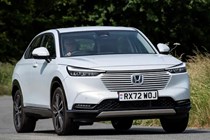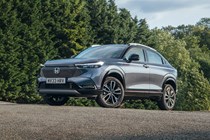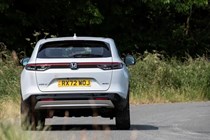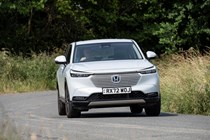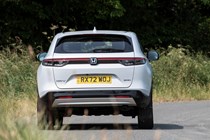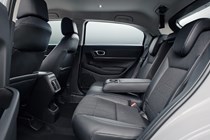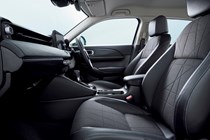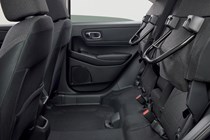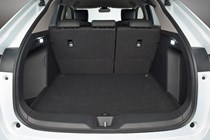
Honda HR-V engines, drive and performance

- Only one drivetrain available
- All models are automatic
- Can feel sluggish and unrefined
Hybrid engine
The HR-V’s hybrid powertrain uses a 1.5-litre petrol engine, and marries it with a battery pack and two electric motors driving the front wheels. Despite its chunky looks, there’s no option of four-wheel drive – situation normal for this class. A total power output of 131hp brings with it a rather unimpressive 10.6 second 0-62mph time.
It doesn’t feel quick. Far from it, in fact. Rather it feels quite strained when getting up to motorway speeds. However, that’s not such a handicap in town. The instant acceleration from the electric motors is useful when pulling out of side roads, and generally navigating the urban environment. That, at least, gives the HR-V more than a little bit of pep at a T-junctions or in the traffic light Grands Prix.
Because of the way the automatic transmission, electric motors and petrol engine work together, when accelerating the revs often climb at a rate that doesn’t marry up with your accelerator use. This means at that 60% throttle it can sound like the pistons are going to escape from the bonnet. It’s so loud at times it feels like Honda forgot to apply soundproofing during the manufacturing process. Even slight inclines wake up the engine, resulting in a strained groan.
The more conventional 1.5-litre turbo found in the Skoda Karoq is certainly nippier and is your better bet overall, especially if you regularly travel with multiple people on board.
There’s no fully electric version of the HR-V, but the Honda e:Ny1 is a similar size and looks a lot like it, although the cars share virtually no mechanical parts. Sadly, the e:Ny1 is also hard to recommend, due to a poor electric driving range, some curious refinement issues and a tiny boot.
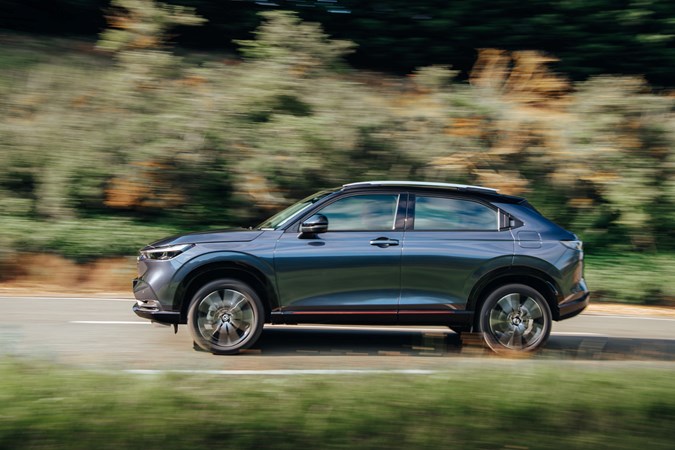
What’s it like to drive?
- Easy to drive but not exciting
- Feels quite tall on the road
- Good ride comfort
In our long-term test of the HR-V, its regular driver Percy Lawman found it comfortable but largely unexciting. He said: ‘The steering is pretty accurate and feels naturally weighted, but the combination of a fairly tall body and a soft suspension means it doesn’t feel especially agile and can be a little soggy going into corners especially if you are keeping up a brisk pace.’
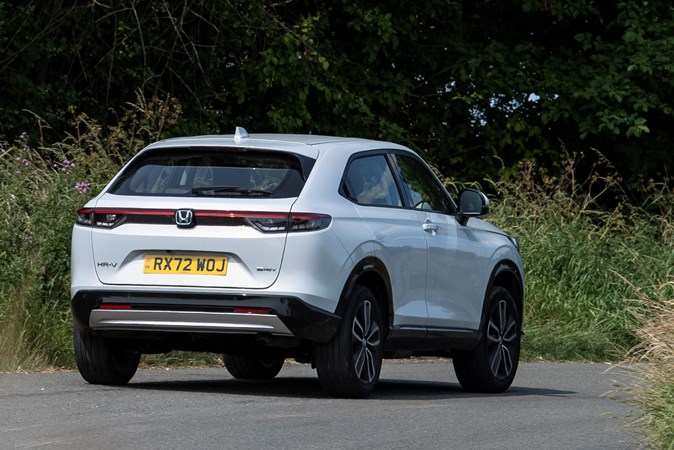
It’s basically comfortable at speed, though. Percy added: ‘It’s a better story when it comes to ride quality. On a typical mix of good old British roads with their fair share of potholes and ravines, the HR-V acquits itself reasonably well with most situations, with compliant suspension and forgiving damping.’
We should also point out that the paddles behind the steering wheel aren’t for changing gears, they’re for turning up and down the regenerative braking. At its maximum setting the car essentially applies the brakes as soon as you lift off the accelerator, turning wasted kinetic energy into added battery power. At its lowest level, it drives the same as a regular car.


